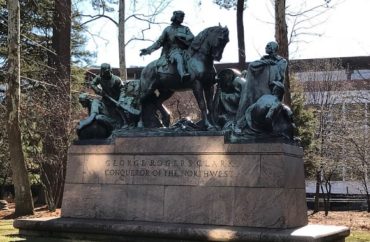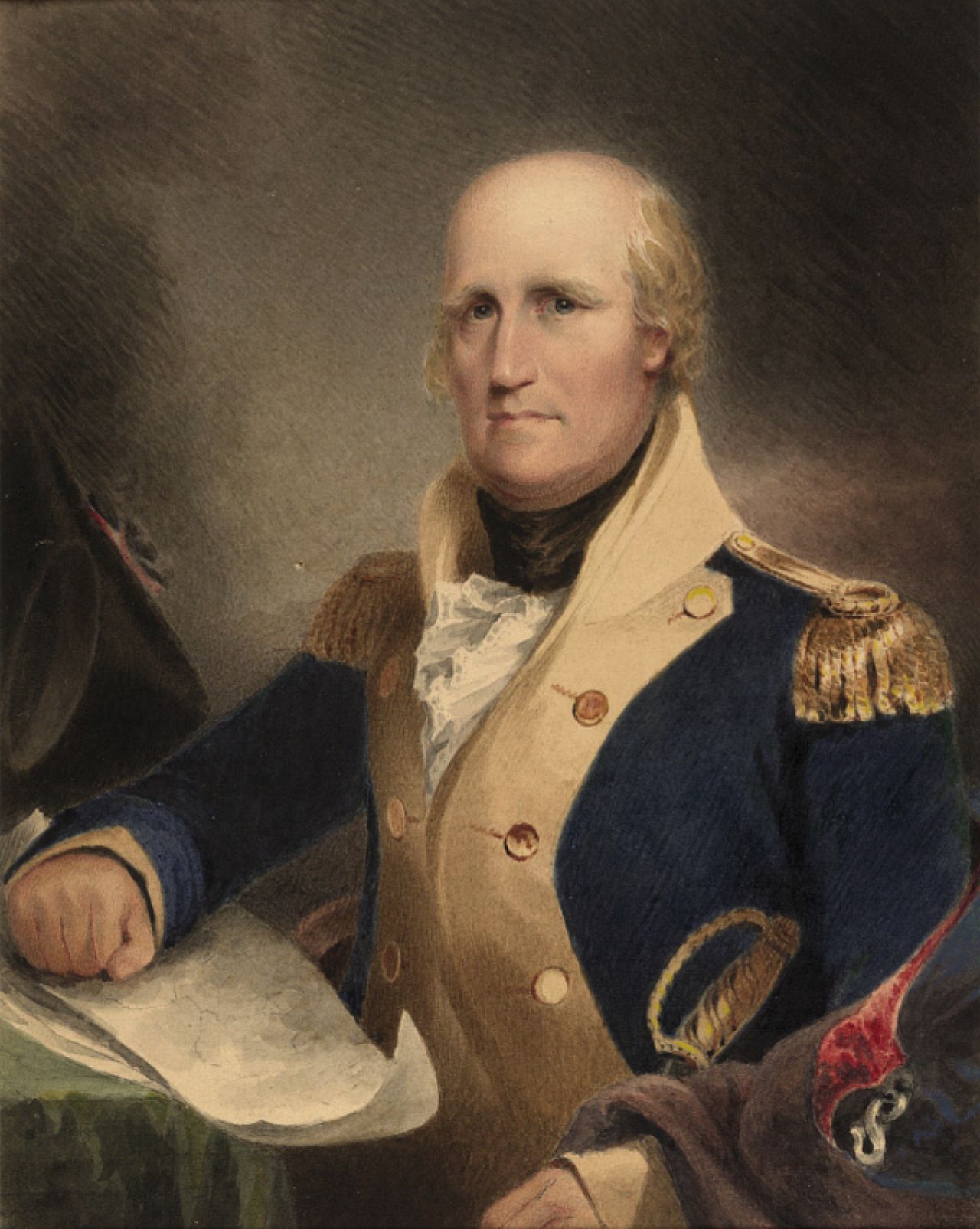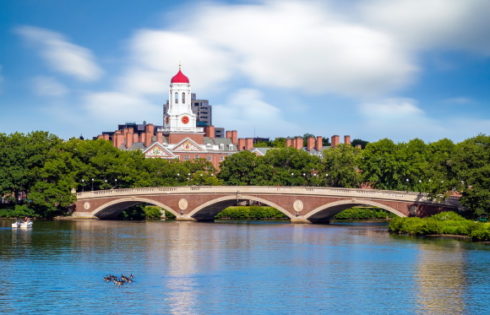
Belongs in ‘museum where it can be presented as a shameful memory,’ activist says
As the University of Virginia grapples with its history of segregation through a formal commission, a local antiwar activist is suggesting an item for its agenda.
David Swanson is petitioning the public university to remove a nearly 100-year-old statue that depicts an American revolutionary on horseback clashing with Native Americans in combat.
The statue commemorates George Rogers Clark, also known as Hannibal of the West, for his accomplishments in expanding U.S. territory westward after leading militia efforts during the Revolutionary War. He was born in Albemarle County, where UVA sits.
Swanson, who advertises himself as a repeat Nobel Peace Prize nominee, calls the statue a “monument to genocide” that does not reflect the values of the campus community.
The statue should be moved “to a museum where it can be presented as a shameful memory,” reads the petition on the website Swanson helps run, RootsAction.org. As of Tuesday night the petition is under 50 supporters away from Swanson’s goal of 500 signatures.
The activist took the initiative to contact UVA President Jim Ryan about the statue, and Ryan referred the matter to the President’s Commission on the University in the Age of Segregation, The Cavalier Daily reported last week.
It’s not clear why the Clark statue does not appear to have drawn high-profile opposition until now. Swanson’s petition notes that the statue, which sits on the edge of campus, is now obscured on three sides by “the growth of trees.” But it could also be that UVA and nearby Charlottesville are full of bigger targets.
For the past few years, the university has been wracked by activism against its founder, Thomas Jefferson, with students vandalizing his monument and calling the American founder a “racist rapist.” Students and professors even demanded that Ryan’s predecessor, Teresa Sullivan, stop quoting Jefferson in public.
UVA media relations did not immediately answer a College Fix query Tuesday to explain whether the statue’s removal is contingent on the commission’s decision.
MORE: UVA students protest statue of ‘racist rapist’ Jefferson

Part of the ‘broader white supremacist project’ at UVA
Established just last year under Sullivan, the commission’s charge is to study and address the university’s history of segregation.
It’s a spinoff of an ongoing 2013 effort, the President’s Commission on Slavery and the University. When UVA announced the segregation commission in early 2018, it noted the slavery commission’s recommended creation of a “Memorial to Enslaved Laborers” that will name the slaves who worked at UVA.
But the commission isn’t in a rush to make a decision about the Clark statue, a commission co-chair told the Daily, despite the urgency Swanson feels.
The status of the “deeply problematic” statue may call for “a moment for reconsideration,” said Kirt von Daacke, an assistant dean and history professor. But he added that the commission is “only about a year into [its] work, and we’re not at the point of making any recommendations for the University.”
MORE: Students accused of white privilege for defending Jefferson statue
The committee’s end game is to “publish a series of articles in UVA Today detailing its research on the university’s role in segregation during the 19th and 20th centuries,” the Daily reported.
The statue will be featured in these articles, von Daacke told the newspaper, since it’s part of the “broader white supremacist project that U.Va. was a very active participant in regionally and nationally.”
One of von Daacke’s colleagues suggests repurposing the Clark statue for educational reasons that also serve a woke purpose.
Richard Handler, anthropology professor and director of the Global Development Studies program, told the Daily that Clark could be used “in an exhibit teaching about genocidal practices carried out by white people against Native Americans.”
Easier to legally remove than Lee and Jackson?
Swanson’s dismay doesn’t end with Clark. The petition notes that the philanthropist who supplied the Clark statute, Paul Goodale McIntire, also paid for other statues around the same time in Charlottesville: Robert E. Lee and Stonewall Jackson.
All three depict “a white man on a horse dressed for war,” the activist notes, but Clark’s faces the best chance of removal because of its physical location.
A judge ruled in April that Charlottesville could not remove the Lee and Jackson statues because they are protected by a Virginia law that predates the Clark statue’s erection. Owing to a 1997 revision that includes cities like Charlottesville, the law bans local governments from removing war memorials that commemorate American conflicts including the Civil War. (Cities are “independent” from counties by law in Virginia.)
Activists argue that as the statue resides on campus grounds, no state mandate can protect Clark’s monument, although the University of Virginia is a public research institution based in Albemarle County.
The statue was officially recognized in the National Register of Historic Places back in 1997, the petition recounts:
At the dedication, then-UVA President Edwin Alderman credited George Rogers Clark with stealing large amounts of territory for an empire — the empire of Virginia, of which the land he claimed had been deemed a part. The Alumni News newspaper celebrated the statue when it was first created as “explaining the futility of resistance.
Another difference between the Clark statue and those of Lee and Jackson is that Clark has company. He’s accompanied by Native American men, a woman and infant, and the Alumni News dedication portrays the woman as being “forced to beg for mercy for her baby,” the petition says.
MORE: Stop quoting Jefferson, students and faculty demand
 Earlier in his military career, Clark (left) spent time defending American settlements in Kentucky from British-backed Native American invaders during the Revolutionary War.
Earlier in his military career, Clark (left) spent time defending American settlements in Kentucky from British-backed Native American invaders during the Revolutionary War.
Later on in the war, he would go on to devise a plan to capture British villages based in the region of Illinois, capturing the territory without firing a single shot, according to the 1896 book Conquest of the Country Northwest of the River Ohio. This victory granted him the title displayed on the statue, “Conqueror of the Northwest.”
Clark’s Illinois military expedition originated in orders from Jefferson, then governor of Virginia, who sent Clark westward to attack the British and their allies, as the petition touches on.
His post-Revolutionary activities included a 1790 effort to counter Native American invasions, which was ultimately abandoned due to a lack of resources, ending without a recorded victory, according to the 2014 book Hoosiers: A New History of Indiana, the state where Clark spent most of his years after service.
Clark is also the brother of William Clark, who made the expedition from Pennsylvania to the Pacific with Meriwether Lewis.
MORE: Florida State students buck PC trend, vote to keep slaveowning founder
IMAGES: Ergo Sum/Wikimedia Commons, public domain
Like The College Fix on Facebook / Follow us on Twitter






Please join the conversation about our stories on Facebook, Twitter, Instagram, Reddit, MeWe, Rumble, Gab, Minds and Gettr.